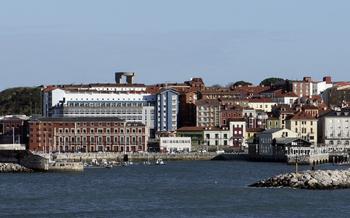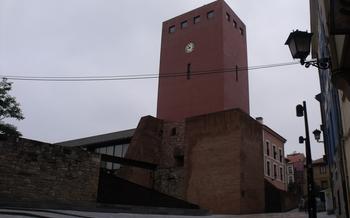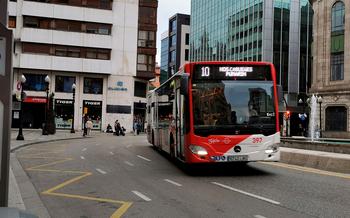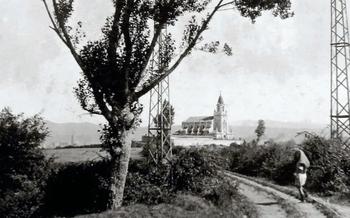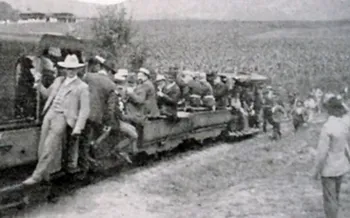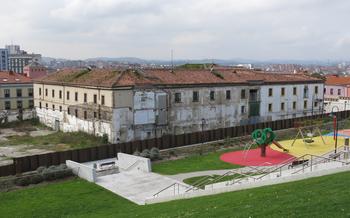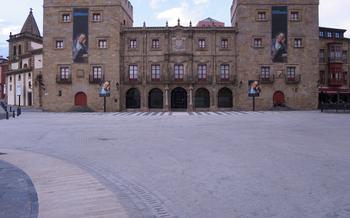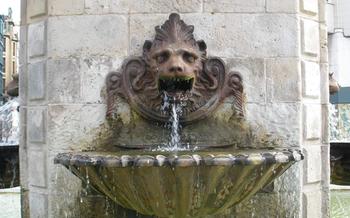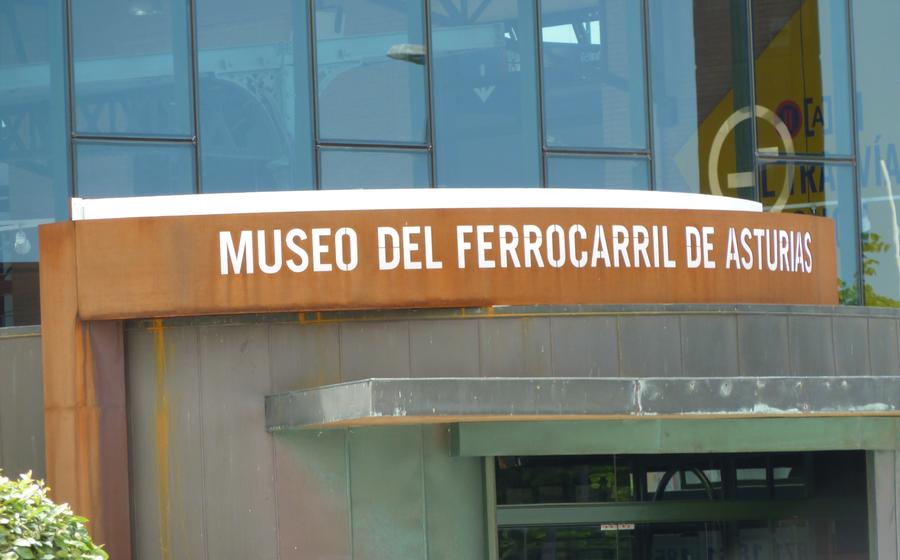
The Railway Museum of Asturias
- The Railway Museum of Asturias: An Ode to Spanish Rail Heritage
- Unveiling the History of Gijón's Railway Network
- Exploring the Museum's Diverse Exhibits
- Interactive Experiences for Rail Enthusiasts
- A Journey Through Time: The Museum's Historic Trains
- Preserving Gijón's Railway Heritage
- The Museum's Educational Programs
- A Haven for Rail Enthusiasts
- Accessibility and Visitor Information
- Capturing the Essence of the Museum:
- Gijón's Railway-Themed Experiences
- Off-the-Beaten-Path Discoveries
- Insider Tip: Unveiling a Hidden Treasure
The Railway Museum of Asturias: An Ode to Spanish Rail Heritage
Housed within the former Gijón railway station, the Railway Museum of Asturias is a testament to the city's rich rail legacy. Step into this captivating museum and embark on a journey through Spanish rail history, where you'll witness the evolution of locomotives, explore interactive exhibits, and delve into the captivating stories that shaped Asturias' industrial and cultural landscape.
Discover a vast collection of locomotives and carriages, each meticulously restored to its former glory, offering a glimpse into the past journeys that crisscrossed the Spanish countryside. Interactive exhibits bring the world of railways to life, allowing you to operate model trains, learn about rail safety systems, and immerse yourself in virtual reality experiences that transport you back in time. Through its diverse exhibits and educational programs, the Railway Museum of Asturias celebrates the enduring legacy of Spain's railways and invites visitors to explore the fascinating world of trains.
Unveiling the History of Gijón's Railway Network
Gijón's railway network has a rich and fascinating history that is intricately intertwined with the growth and development of the city itself. The origins of Gijón's railways can be traced back to the mid-19th century when the city was experiencing rapid industrial growth. The need for efficient transportation of goods and people led to the construction of the first railway line connecting Gijón to the neighboring town of Sama de Langreo. This initial line marked the beginning of a railway network that would eventually span the entire region of Asturias, connecting Gijón to major cities and industrial centers.
As Gijón's industries flourished, so did its railway network. New lines were built to transport coal, iron ore, and other raw materials to the city's factories and ports. The arrival of the railway also played a pivotal role in the development of Gijón's tourism industry. The city's beautiful beaches and scenic surroundings attracted visitors from all over Spain and beyond, and the railway provided a convenient and affordable means of transportation for these tourists.
Over the years, Gijón's railway network underwent significant changes and improvements. New technologies were introduced, such as steam locomotives and diesel engines, which increased the speed and efficiency of rail travel. The network also expanded to include more lines and stations, connecting Gijón to a wider range of destinations.
Today, Gijón's railway network remains an essential part of the city's transportation system. It continues to play a vital role in the movement of goods and people, and it also serves as a reminder of the city's rich industrial and cultural heritage.
Exploring the Museum's Diverse Exhibits
The Railway Museum of Asturias boasts a diverse collection of exhibits that take visitors on a journey through the history of rail transportation in Spain. Get up close with a variety of locomotives, from the sleek and modern to the vintage and steam-powered. Marvel at meticulously restored carriages that offer a glimpse into the opulence and comfort of past journeys. Step inside the museum's Signal Box to learn about the intricate systems that ensure the safe and efficient operation of trains. Examine an array of rail equipment, including signals, tools, and communication devices that played a crucial role in the development of Spain's rail network. Each artifact tells a story, showcasing the ingenuity and dedication of the engineers, workers, and passengers who shaped Gijón's railway legacy.
Interactive Experiences for Rail Enthusiasts
The Railway Museum of Asturias offers a range of interactive experiences that bring the world of railways to life for visitors of all ages. Engage in hands-on activities that simulate the challenges of rail operations, such as operating model trains on miniature layouts. Learn about rail safety and signaling systems through interactive displays that provide a deeper understanding of these crucial aspects of railway operations. Immerse yourself in virtual reality experiences that transport you back in time to witness historic rail journeys, offering a unique perspective on the evolution of rail travel. These interactive experiences not only enhance the learning experience but also create lasting memories for visitors, fostering a deeper appreciation for the intricacies of railway operations and the history of Gijón's rail network.
A Journey Through Time: The Museum's Historic Trains
The Railway Museum of Asturias houses a remarkable collection of iconic locomotives that played a pivotal role in shaping Spain's rail network. These vintage machines, meticulously restored and preserved, offer a captivating glimpse into the evolution of train design and technology.
Among the highlights of the collection is the locomotive 10802, a powerful steam engine built in 189Visitors can marvel at its intricate craftsmanship and engineering prowess, which enabled it to haul heavy loads of coal and minerals across the rugged terrain of Asturias.
Another notable locomotive is the diesel-electric locomotive 333, a symbol of the modernization of Spain's rail system in the 1950s. Its sleek design and advanced technology revolutionized rail travel, allowing for faster and more efficient transportation of passengers and goods.
The museum also features a collection of electric locomotives, including the locomotive 26202, which was instrumental in the electrification of Spain's rail lines in the 1970s. Its innovative design and energy efficiency paved the way for more sustainable and environmentally friendly rail operations.
Each locomotive on display has a unique story to tell, providing visitors with insights into their specific routes, purposes, and contributions to Spain's rail history. Through these iconic locomotives, the museum offers a tangible connection to the past, showcasing the remarkable evolution of rail technology and its impact on the nation's industrial and cultural development.
Preserving Gijón's Railway Heritage
The Railway Museum of Asturias plays a crucial role in preserving Gijón's railway heritage, ensuring that the city's rich rail history is not forgotten. Through meticulous restoration and conservation techniques, the museum's dedicated staff works tirelessly to maintain the collection of locomotives, carriages, and artifacts in pristine condition.
The preservation process involves careful assessment of each item's condition, followed by expert restoration work that adheres to strict conservation principles. This includes cleaning, repairing, and replacing damaged parts while maintaining the authenticity and integrity of the artifacts.
Preserving historic locomotives and carriages presents unique challenges. These aging machines require specialized skills and knowledge to ensure their proper functioning and longevity. The museum's team collaborates with experts in various fields, including mechanics, engineers, and historians, to address these challenges effectively.
By preserving Gijón's railway heritage, the museum not only safeguards the city's history but also contributes to the preservation of Spain's broader rail heritage. Each locomotive, carriage, and artifact tells a story of innovation, engineering prowess, and the transformative impact of railways on society. Through its preservation efforts, the museum ensures that these stories continue to be told for generations to come.
The Museum's Educational Programs
The Railway Museum of Asturias recognizes the importance of educating visitors of all ages about the rich history of railways and their impact on society. To this end, the museum offers a range of educational programs designed to engage and inspire students, families, and rail enthusiasts alike.
Workshops, guided tours, and lectures are just a few of the educational initiatives offered by the museum. These programs provide participants with hands-on experiences, in-depth knowledge, and a deeper appreciation for the world of railways.
School groups are particularly encouraged to visit the museum, as its educational programs align with various curriculum subjects, including history, science, and technology. Guided tours tailored to different age groups bring the museum's exhibits to life, allowing students to learn about the evolution of rail technology, the role of railways in shaping societies, and the engineering marvels that made rail travel possible.
Families can also enjoy a range of educational activities at the museum. Interactive exhibits, storytelling sessions, and family-friendly workshops provide a fun and engaging way for parents and children to learn together. These programs foster a love of learning and create lasting memories for families.
For rail enthusiasts of all ages, the museum offers specialized lectures, seminars, and workshops that delve into specific aspects of railway history and technology. These programs provide a platform for experts and enthusiasts to share their knowledge and insights, fostering a sense of community and encouraging lifelong learning.
The Railway Museum of Asturias' educational programs play a vital role in preserving and promoting railway heritage while inspiring future generations of rail enthusiasts. Through these programs, the museum ensures that the legacy of railways remains alive and well, captivating the minds and imaginations of visitors from all walks of life.
A Haven for Rail Enthusiasts
The Railway Museum of Asturias serves as a meeting ground for rail enthusiasts from all walks of life. Here, you'll find a vibrant community of individuals who share a deep-rooted passion for trains and railways. The museum organizes regular events, workshops, and gatherings that provide opportunities for these enthusiasts to connect, engage in discussions, and delve deeper into the world of railways.
Whether you're a seasoned rail enthusiast or simply curious about the history of transportation, the museum offers a welcoming environment where you can learn, share, and connect with like-minded individuals. Participate in thought-provoking discussions, attend workshops conducted by experts in the field, and engage in hands-on activities that bring the world of railways to life.
The museum also provides a platform for individuals to contribute to its mission of preserving and promoting railway heritage. Volunteer opportunities are available for those who wish to share their knowledge, skills, and enthusiasm with others. By joining the museum's volunteer team, you'll become an integral part of the community and contribute to the preservation of Gijón's railway legacy for future generations.
So, if you're a rail enthusiast looking for a place to connect with others who share your passion, the Railway Museum of Asturias is the perfect destination. Immerse yourself in the vibrant community of rail enthusiasts, engage in stimulating discussions, and contribute to the preservation of Gijón's rich railway heritage.
Accessibility and Visitor Information
Planning your visit to the Railway Museum of Asturias is essential to make the most of your experience. The museum is open to the public from Tuesday to Sunday, with specific hours for guided tours. Admission fees are affordable, catering to visitors of all budgets. The museum is wheelchair accessible, ensuring that everyone can enjoy the exhibits and learn about Gijón's railway heritage.
Facilities at the museum include a gift shop where you can purchase souvenirs and mementos of your visit. You can also grab a bite to eat at the museum's cafeteria, which offers a variety of snacks and refreshments. To enhance your understanding of the exhibits, guided tours are available, providing insights into the history and significance of the locomotives and artifacts on display.
To make the most of your visit, it's recommended to plan your itinerary in advance. Allocate sufficient time to explore the various exhibits, and don't forget your camera to capture the beauty and history of the museum. For those with specific needs, such as accessibility accommodations, it's advisable to contact the museum in advance to ensure a smooth and enjoyable visit.
Capturing the Essence of the Museum:
The Railway Museum of Asturias is a treasure trove of visual delights, waiting to be captured through the lens of your camera. From the majestic locomotives that dominate the halls to the intricate details of the exhibits, the museum offers endless opportunities for photography enthusiasts. Take advantage of the well-lit spaces and carefully composed displays to capture the beauty and essence of this unique collection. Don't miss the chance to immortalize the museum's highlights, from the gleaming engines to the nostalgic carriages, and share your best shots with the world.
Gijón's Railway-Themed Experiences
Extend your railway adventure beyond the museum walls and immerse yourself in Gijón's rich railway heritage. Embark on a scenic train journey along the picturesque coastline, marveling at the breathtaking views as you traverse stunning landscapes. Discover other railway-related attractions in the city, such as historic stations that have stood the test of time and scenic rail routes that offer a unique perspective of Gijón's surroundings. Craft a comprehensive itinerary that seamlessly blends the museum experience with these captivating railway-themed adventures, ensuring an unforgettable exploration of Gijón's railway legacy.
Off-the-Beaten-Path Discoveries
Venture beyond the main exhibits to uncover hidden gems in the museum's collection. Seek out unique artifacts, overlooked corners, and lesser-known stories that add depth to your visit. Share your off-the-beaten-path discoveries with fellow travelers, encouraging them to explore beyond the obvious. Create a sense of discovery and adventure within the museum's walls.
Perhaps the most intriguing hidden gem within the museum is a small, unassuming locomotive tucked away in a far corner of the roundhouse. This locomotive, known as "La Vieja" (The Old Lady), is one of the oldest steam locomotives in Spain and has a fascinating history. Built in 1856, La Vieja was one of the first locomotives to operate in Asturias and played a crucial role in the development of the region's railway network. Despite its age, La Vieja is still in working condition and is occasionally used for special events and demonstrations.
Another hidden gem worth seeking out is the museum's collection of railway uniforms. These uniforms, worn by railway workers throughout the years, offer a glimpse into the changing styles and traditions of the Spanish railway industry. From the elaborate uniforms of the early 20th century to the more modern and practical uniforms of today, this collection provides a unique perspective on the history of Gijón's railways.
By exploring beyond the main exhibits, visitors can discover the hidden stories and treasures that make the Railway Museum of Asturias a truly special place. Whether it's the intriguing history of La Vieja, the fascinating collection of railway uniforms, or simply the chance to explore the museum's nooks and crannies, there is something for every visitor to discover.
Insider Tip: Unveiling a Hidden Treasure
Beyond the main exhibits, the Railway Museum of Asturias holds a hidden gem that only the most discerning visitors may discover. Tucked away in a corner of the museum, you'll find a meticulously restored railcar that once carried passengers on a legendary journey. Step inside this vintage carriage and be transported back in time as you admire its plush seats, intricate woodwork, and gleaming brass fittings. Imagine the stories it could tell of the people who traveled within its walls, embarking on adventures and forging connections across the Spanish countryside. This hidden treasure is a testament to the museum's dedication to preserving the rich history of Gijón's railways, and it's waiting to be discovered by those who seek to uncover the secrets of this remarkable institution.
